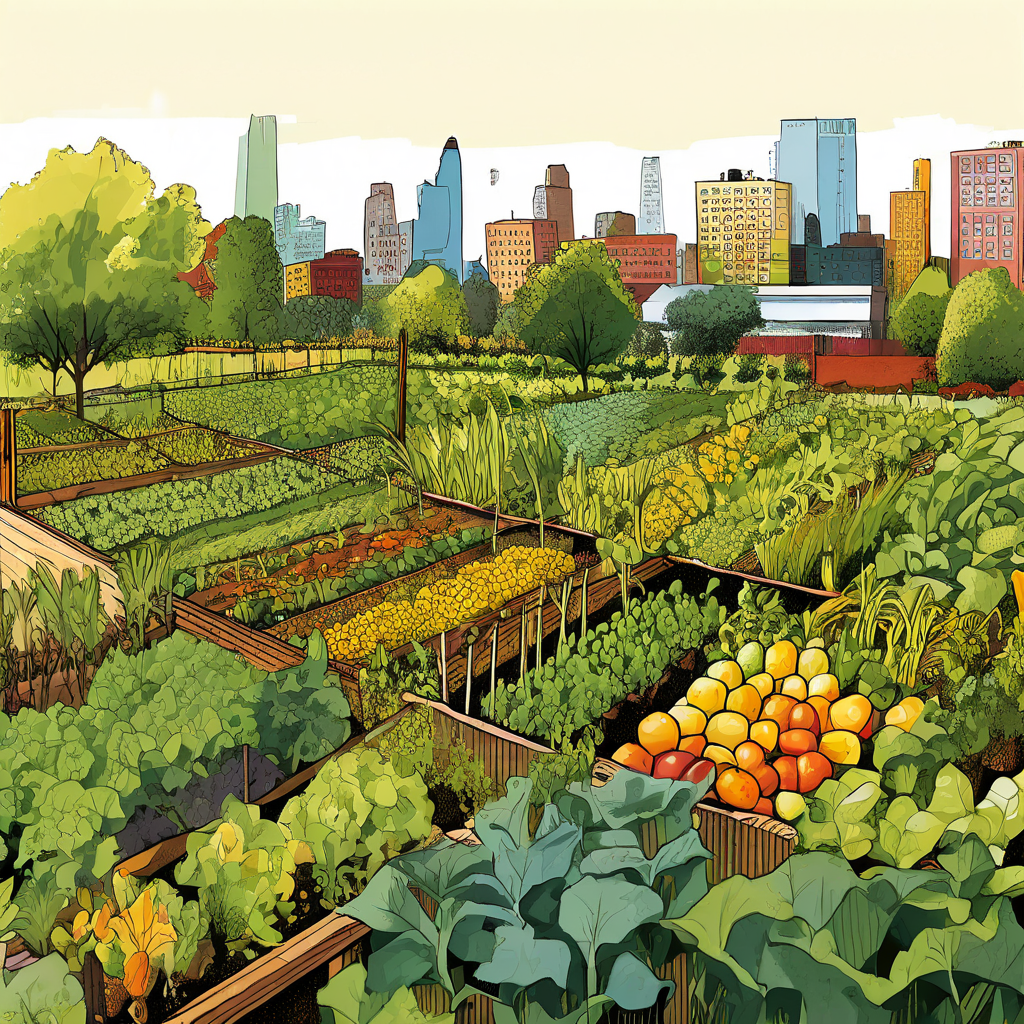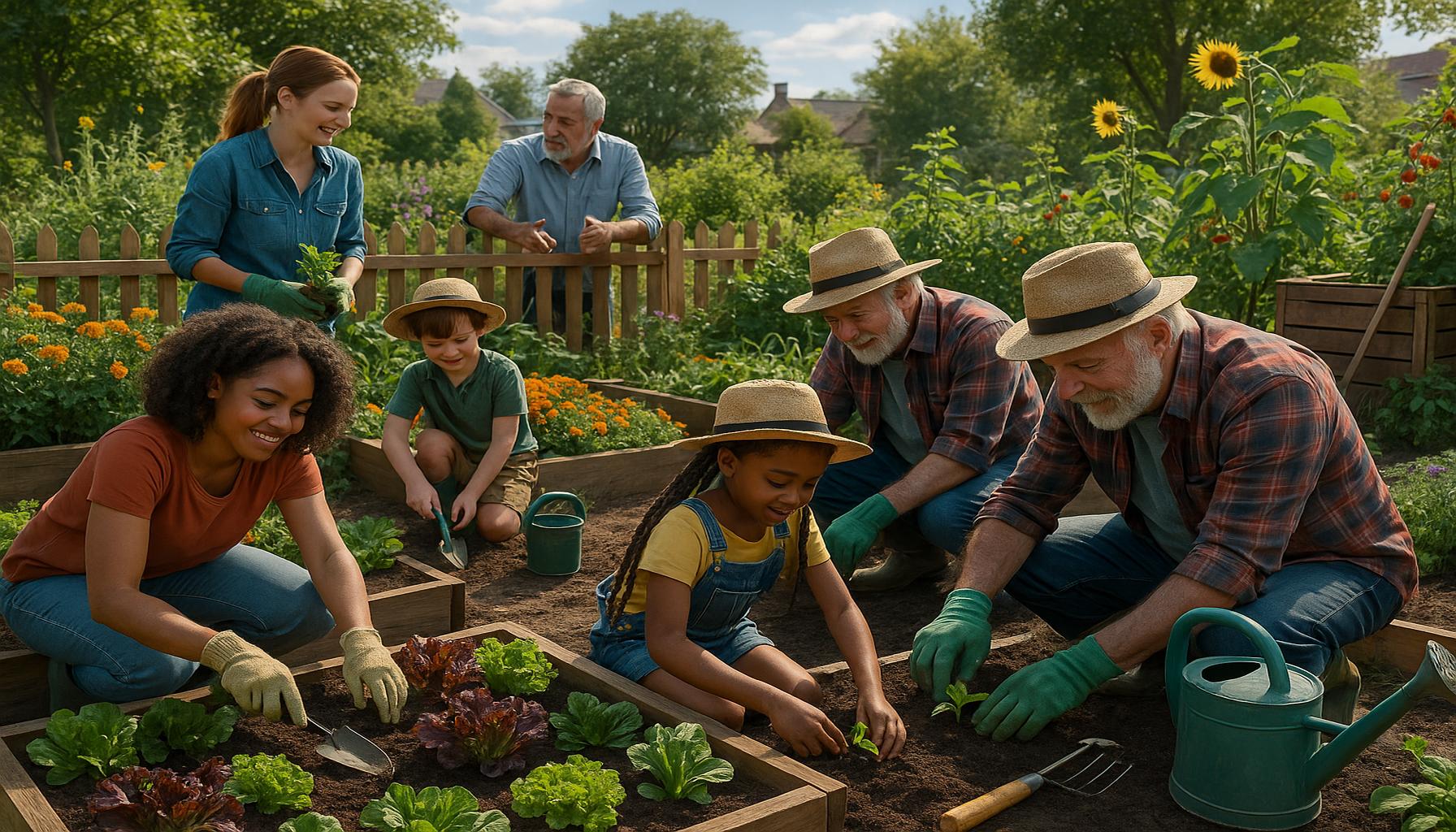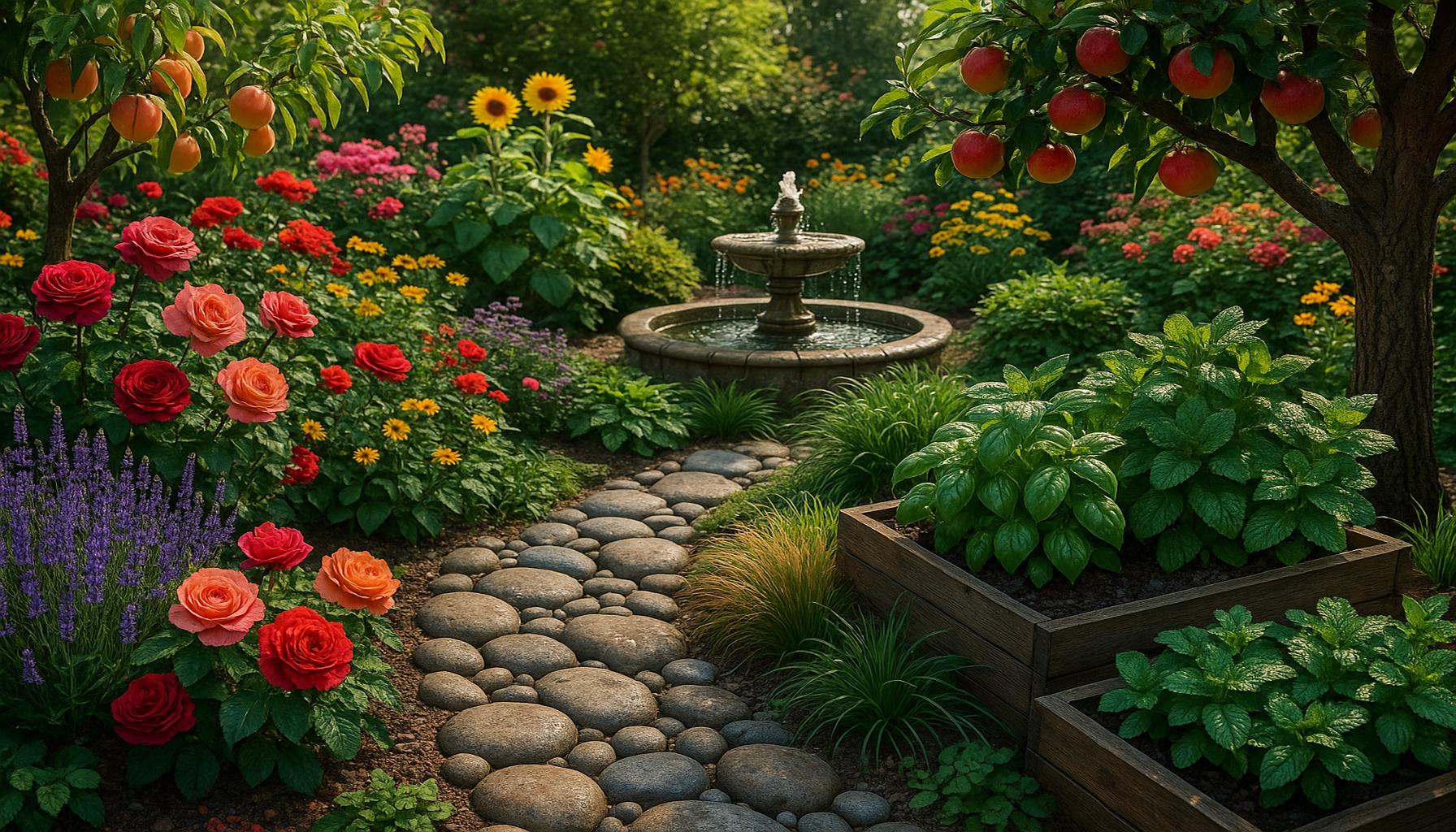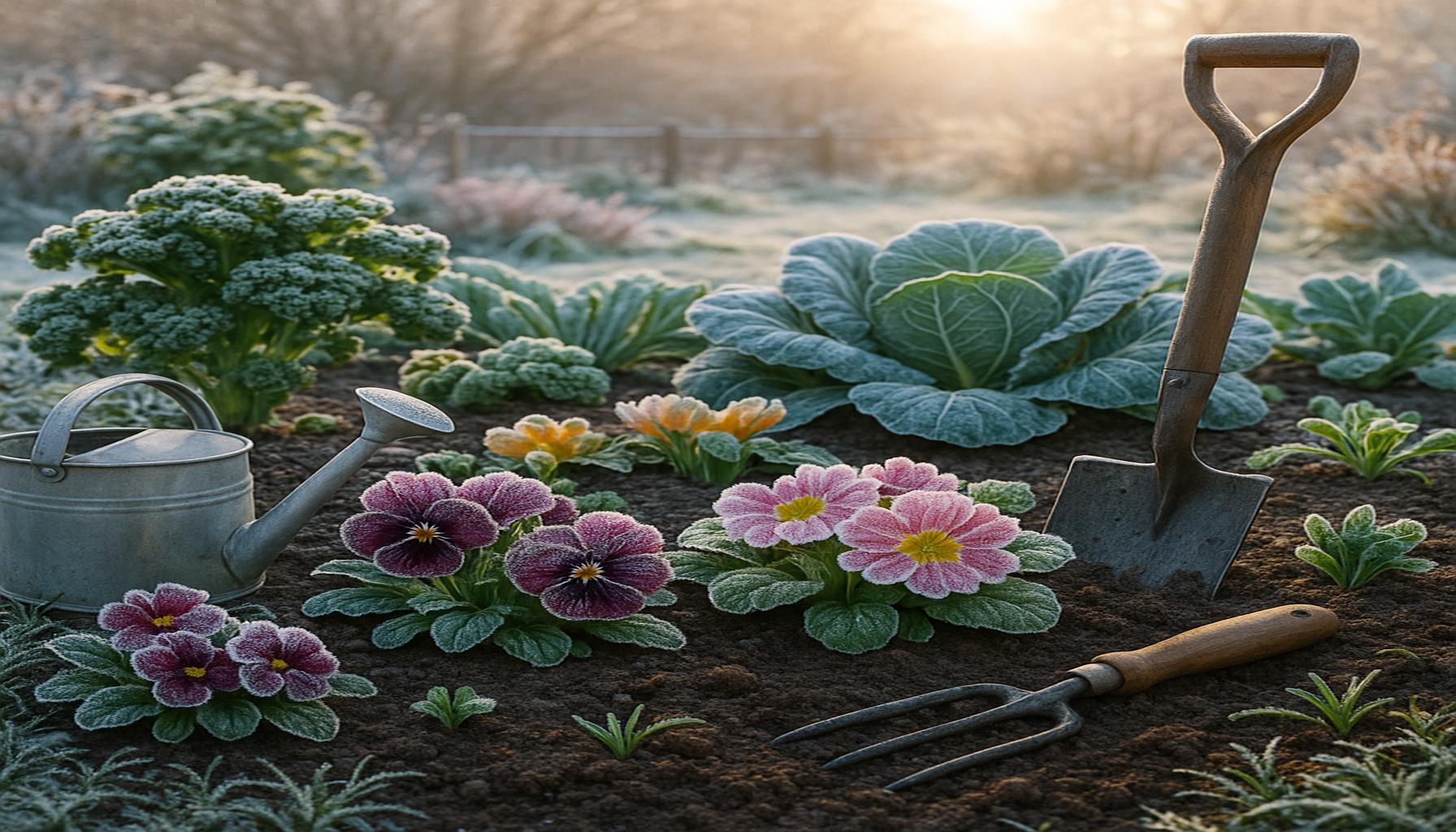Low Water Consumption Gardening: Strategies for Creating a Sustainable Green Space in Arid Climates

Understanding the Benefits of Low Water Consumption Gardening
As climate change continues to alter weather patterns globally, the challenges of droughts and water scarcity are increasingly evident, particularly in the United States. Residents in states like California, Arizona, and Texas often grapple with limited water resources. Low water consumption gardening presents a vital approach to cultivate beautiful landscapes while prioritizing water conservation.
To embark on a successful low-water garden, it is essential to understand the fundamental principles of sustainable gardening. Not only do these practices lend a hand to environmental efforts, but they also provide a sense of fulfillment and accomplishment for gardeners. Here are some key strategies to embrace:
- Drought-resistant plants: These plants, often native to arid environments, are best adapted to survive with minimal watering. For instance, plants like the Agave, Lavender, and California Poppy require less water and are visually stunning, showcasing vibrant colors and unique shapes. Incorporating succulents and xerophytes into your landscape design can dramatically reduce irrigation needs.
- Efficient irrigation systems: Traditional watering methods can be wasteful and inefficient. Adopting a drip irrigation system ensures that water is delivered directly to the plant roots, minimizing evaporation and runoff. Additionally, rainwater harvesting systems allow gardeners to collect and store rain, which can then be used to irrigate gardens during dry spells, making every drop count.
- Mulching techniques: Organic mulches, such as wood chips or straw, serve multiple purposes. They help retain soil moisture by reducing evaporation, suppress weed growth that competes for water resources, and further improve the aesthetic appeal of the garden. Layering mulch around plants not only creates a beautiful, polished look but also fosters healthier soil.
Implementing these practices can significantly enhance the resilience of your garden against dry conditions. Furthermore, low water consumption gardening promotes biodiversity, as native plants often attract local wildlife and pollinators. Gardeners who embrace these sustainable techniques contribute to the preservation of ecosystems, making their gardens a sanctuary for various species.
By adopting these innovative strategies, individuals not only foster environments that celebrate life despite adverse conditions but also take pivotal steps toward environmental stewardship. Engaging in low-water gardening invites you into a community of like-minded individuals working together to create sustainable spaces. Not only does it make ecological sense, but it also opens up a world of beauty and inspiration to behold in your backyard.
DIVE DEEPER: Click here to enhance your communication skills

Essential Elements of Low Water Consumption Gardening
Transitioning to low water consumption gardening necessitates an integration of well-researched techniques that support sustainability while enhancing the beauty of your outdoor space. As the climate continues to shift, adopting these principles not only aids in conserving a crucial resource but also cultivates an aesthetically pleasing landscape. Here are some essential elements that can guide your low water consumption gardening efforts:
- Soil Health and Structure: Healthy soil is foundational to a sustainable garden. Implementing practices like adding organic matter—such as compost or aged manure—improves soil structure, enhances its ability to retain moisture and provides essential nutrients for plants. The better your soil, the deeper the roots grow, making plants less reliant on frequent watering.
- Plant Selection: Understanding local ecosystems is key to successful low water consumption gardening. Focus on selecting plants that thrive in arid conditions. Native varieties, such as Creosote Bush and Saguaro Cactus, are specifically adapted to survive with minimal water and often require less maintenance than their non-native counterparts. Furthermore, introducing a mix of perennials and drought-tolerant annuals provides varied colors and textures throughout the gardening season.
- Strategic Plant Placement: Arranging plants based on their water needs significantly contributes to water efficiency. Grouping together plants with similar water requirements allows for targeted watering that minimizes waste. Placing drought-resistant plants in sunny areas while shading moisture-sensitive plants with larger species creates a microclimate that can reduce evaporation rates.
Incorporating these elements into your gardening practice not only aids in effective water management but also contributes to the overall health of the ecosystem. Benefits extend beyond immediate water conservation; a well-designed low water garden can improve soil fertility, promote wildlife diversity, and enhance local climatic conditions through the cooling effect of lush green spaces.
Moreover, understanding climate-specific challenges provides gardeners the insight needed to prepare for excessive heat or unpredictable rainfall. For instance, suburban areas with clay soils may benefit from raised beds that enhance drainage while urban environments with limited space might thrive with vertical gardens that beautifully utilize available areas. By embracing these methodologies, you not only create a sustainable green space but also foster resilience against the changing environment.
Beyond the environmental impact, engaging with sustainable gardening practices supports community initiatives, encouraging others to pursue similar pathways and contribute to broader conservation goals. Together, individuals can make significant strides towards building arid-resilient landscapes that harmoniously blend with nature.
Effective Strategies for Low Water Consumption Gardening
Creating a sustainable green space in arid climates involves implementing innovative gardening techniques that prioritize water conservation while promoting plant health. Here are several effective strategies that homeowners can adopt:
1. Soil Management
The health of your soil is crucial in a low water consumption garden. Incorporating organic matter such as compost can improve soil structure, enhance moisture retention, and provide essential nutrients. Utilizing techniques like mulching not only helps in reducing evaporation but also controls weed growth, ensuring that your plants have the best possible environment to thrive.
2. Xeriscaping
Xeriscaping is a sustainable landscaping approach that uses drought-tolerant plants suited for your region. By selecting native plants that require minimal watering, you can create a stunning garden that supports local wildlife while conserving precious water resources. Plants such as succulents, lavender, and sage not only add aesthetic value but are also well adapted to arid conditions.
3. Smart Irrigation Techniques
Understanding when and how to water is key. Drip irrigation systems deliver water directly to the roots of plants at a slow rate, minimizing waste. Additionally, watering early in the morning or late in the afternoon reduces evaporation, ensuring that more water reaches your plants. Implementing moisture sensors can further optimize irrigation timing and efficiency.
4. Rainwater Harvesting
Collecting rainwater is a practical and eco-friendly approach to irrigation. Installing rain barrels allows you to capture and store runoff from your roof to use during dry spells. This not only conserves tap water but also provides a source of nutrient-rich water for your garden.
5. Planting Strategies
Grouping plants with similar water needs together can significantly enhance water efficiency. This technique, known as hydrozoning, allows for tailored watering solutions based on the specific requirements of different plants, reducing overall water usage.By adopting these strategies, gardeners can create lush, vibrant spaces that thrive in challenging arid environments while significantly reducing their water footprint. Each method supports sustainability and can contribute to a more resilient local ecosystem, encouraging exploration into low water consumption gardening practices.
| Category | Details |
|---|---|
| Soil Management | Enhances moisture retention and nutrient availability |
| Xeriscaping | Uses drought-tolerant plants to reduce water needs |
| Smart Irrigation Techniques | Optimizes watering with drip systems and timing |
| Rainwater Harvesting | Utilizes collected rain for garden irrigation |
| Planting Strategies | Groups plants with similar needs for efficient watering |
DISCOVER MORE: Click here to learn about the evolution of digital art
Water Conservation Techniques for Sustainable Gardening
In addition to selecting appropriate plants and ensuring soil health, implementing specific water conservation techniques can significantly enhance the effectiveness of low water consumption gardening. By adopting these methods, gardeners can stretch their water supply further, turning their green spaces into resilient sanctuaries even in the face of arid conditions.
- Efficient Irrigation Methods: Traditional overhead watering systems often waste water through evaporation and runoff. Instead, consider drip irrigation systems, which deliver water directly to the root zones of plants. This method not only conserves water but also minimizes disease by keeping foliage dry. Collecting greywater from household activities, such as showers or dishwashing, is another strategy that can be employed judiciously for irrigation in compliance with local regulations.
- Rainwater Harvesting: Capturing rainwater provides a sustainable solution for watering your garden. Installing rain barrels or cisterns at downspouts allows you to store rainwater for future use, which can be especially beneficial during the dry months. This technique not only reduces dependency on municipal sources but also makes the most of the natural precipitation available in your area.
- Mulching: Applying a layer of organic mulch, such as wood chips or straw, around your plants significantly reduces evaporation from the soil surface. Additionally, mulch improves soil structure and suppresses weed growth, which can compete for valuable water resources. A well-mulched garden can retain moisture longer and reduce the need for frequent watering.
As water conservation becomes increasingly paramount, xeriscaping has emerged as a highly effective gardening strategy for dry climates. This approach involves designing landscapes that require little to no irrigation beyond natural rainfall. By selecting plants suited for your local climate and grouping them according to similar water needs, you can create a visually appealing and sustainable environment. Xeriscaped areas often feature ornamental rocks, native grasses, and strategically placed boulders, crafting a natural aesthetic while promoting moisture retention.
The use of permeable hardscaping is another innovative method gaining traction. Instead of solid surfaces, choose materials like permeable pavers for walkways and driveways. These surfaces allow rainwater to percolate through, reducing runoff and promoting groundwater recharge. Incorporating bio-swales — landscaping elements designed to concentrate or remove debris and pollution out of surface runoff water — can also aid in managing stormwater while enhancing landscape design.
Furthermore, adopting a mindful approach to watering schedules can lead to substantial water savings. Watering early in the morning or late in the evening minimizes evaporation losses and can lead to healthier plant growth as cooler temperatures help moisture penetrate the soil more effectively. Using a moisture meter can guide gardeners on when to water, ensuring that plants receive water only when they truly need it.
Finally, keeping a close eye on local weather patterns will empower gardeners to plan their watering around predicted rainfalls or temperature shifts. By staying informed and flexible, gardeners can adjust their methods to align with the conditions, maximizing water use efficiency while establishing a thriving, low-water garden.
DISCOVER MORE: Click here to find out how to relax and unwind
Conclusion: Embracing Sustainable Practices for Future Generations
In the quest for low water consumption gardening, the importance of adopting sustainable strategies cannot be overstated, especially in arid climates where water scarcity is a pressing concern. By selecting drought-resistant plants, improving soil health, and implementing efficient watering techniques such as drip irrigation and rainwater harvesting, gardeners can create lush green spaces that thrive with minimal water usage.
The incorporation of xeriscaping practices allows for the design of landscapes that align with the local ecosystem while reducing reliance on supplemental irrigation. Utilizing permeable hardscaping and bio-swales not only aids in stormwater management but also encourages groundwater replenishment, fostering a symbiotic relationship between the garden and the surrounding environment.
Ultimately, the proactive approach to scheduling watering, informed by local weather patterns, empowers gardeners to maximize their resources, ensuring plants receive hydration when they need it most. Comprehensive planning and thoughtful implementation of these strategies can lead to a flourishing garden that conserves water and honors the delicate balance of nature.
As we move forward, embracing the principles of low water consumption gardening will be vital not only for individual households but also for community resilience in the face of climate change. Each small step taken towards creating a sustainable green space contributes to a broader movement aimed at preserving our planet for future generations. By fostering awareness and sharing successful techniques, we can inspire a collective effort to cultivate a greener, more sustainable world—one garden at a time.


